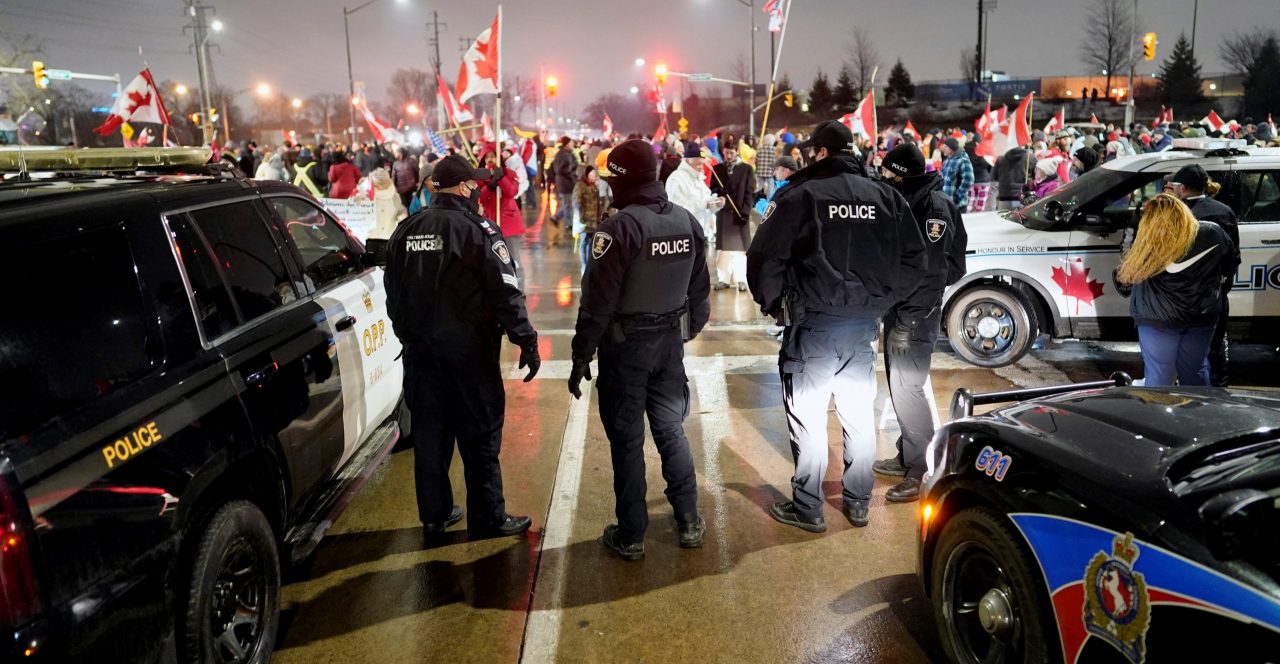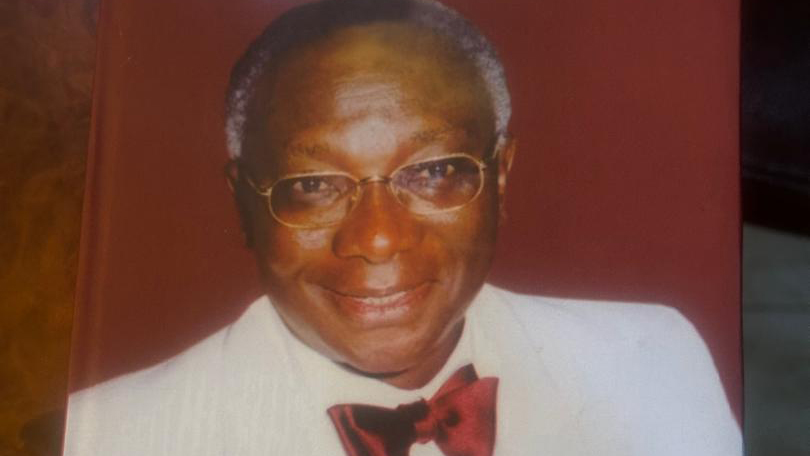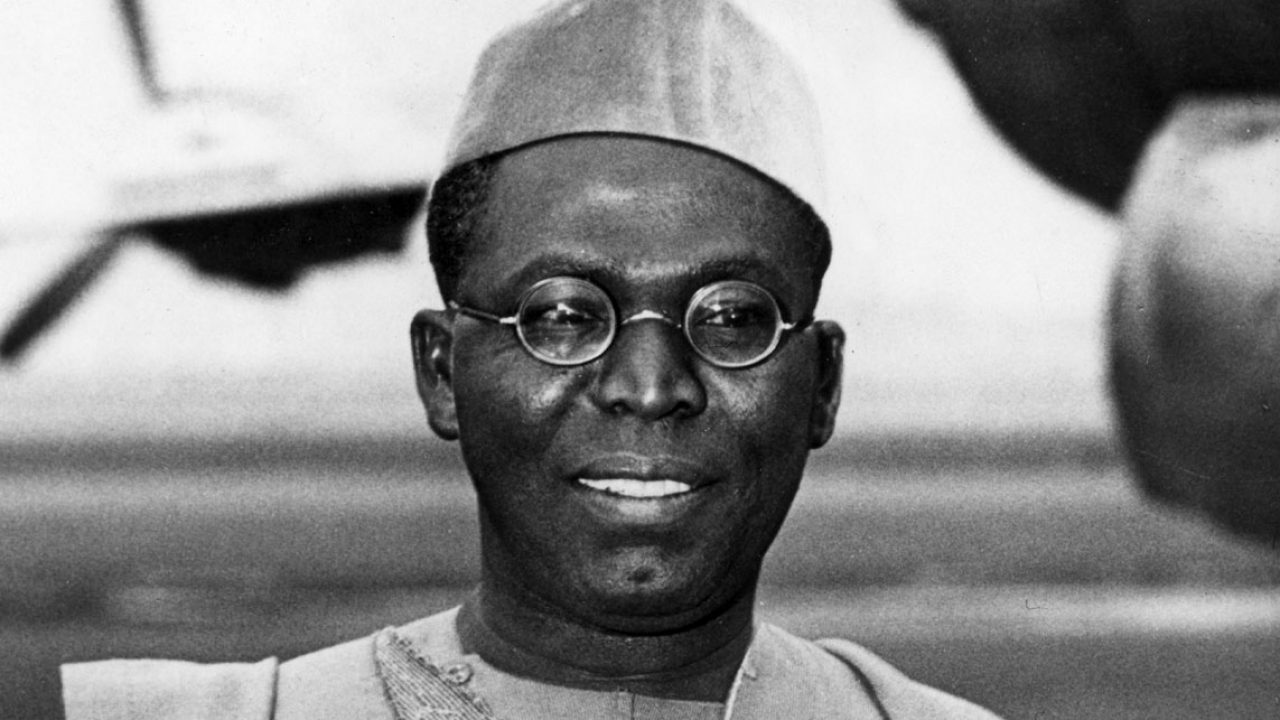
The freedom convoy, which began in January 2022 to challenge vaccination requirements for truckers crossing the Canada-U.S. border, is a fascinating specimen for the sociology of law enforcement. At a time of growing fatigue over social distancing and other COVID-19 measures, the protests soon began to evolve. Some protesters have been observed bearing Nazi symbols. Reports of harassment of residents and violence against passersby, Trump 2024 signage and hate crimes have emerged. These concerns fit into the criminal activities of right-wing groups identified in a report submitted to Public Safety Canada and have led to questions about whose freedoms the protesters are fighting for.
Law enforcement or lack thereof has been the epicentre of public discourses on the freedom convoy. At issue is juxtaposition of the freedom convoy and how protests by Indigenous groups were handled in the recent past. While downtown Ottawa has been ground zero of the protests, the Coutts, Alberta crossing has seen its share of blockade. A statement by the Athabasca Chipewyan First Nation argues “If the blockade in Coutts consisted of Indigenous people, there would have been arrests and charges laid; instead, the Coutts blockade is being allowed to continue, even though it has at times become violent… It is important to recognise the disparity between how Indigenous and non-Indigenous protests are approached by our government. It is shocking to see this blatant disparity”. Indeed, the differential law enforcement intervention stares us all in the face. However, it is a mistake to consider this primarily or exclusively a law enforcement problem. The superficial law enforcement paralysis more than a week into the protests speaks to broader issues in our society.
It is more than a policing matter. The response to the freedom convoy offers a glimpse into the underbelly of the criminal justice system. The law is not like the weather and its enforcement involves significant degrees of discretion. Earlier in my career, I occasionally asked second-year introductory criminology students to indicate by raising their hands if they had ever encountered situations in which the police caught them with contrabands (e.g. drugs), seized such items and asked them to go home. Some hands would usually go up with their peers shocked. I would explain to the students that they went back home peacefully to their parents for the same acts over which their peers might have been arrested, prosecuted and sentenced to prison. The aim was to help students think about inequality in the criminal justice system and their own social positionality. The dispensation of favourable or unfavourable discretionary use of power goes beyond policing. The judiciary is not immune. The prosecution of participants in the January 6, 2021 attack on the U.S. Capitol has been fraught with professional lenience that questions the notion of equality before the law.
For example, Judge Beryl A. Howell was unsparing in her critique of the “disconnect” between the gravity of the actions of the offenders and the tepid charges filed by the U.S. Department of Justice. She described the situation as “muddled” and “almost schizophrenic” asking “Is it the government’s view that the members of the mob that engaged in the Capitol attack on January 6 were simply trespassers?” The Republican-Democrat divide on the attack was irrelevant. My point? The criminal justice system works in ways that dovetail with the contours of inequality in society.
Political capital. The freedom convoy protesters have been able to draw on a level of political capital that most people who take to the streets to fight for their rights rarely have. Conservative party leader, Erin O’toole, met with some of the protesting truckers before being ousted. The CTV reports that his interim successor, Candice Bergen, ‘“pushed” O’Toole ‘to show support for the Freedom Convoy protest, arguing… there are “good people on both sides”’. It was an unoriginal statement, of course, but emblematic of the thinking at the highest echelons of the Conservative Party. The report also states that Bergen informed MPs that “I don’t think we should be asking them to go home”, rather the issue should be turned into a problem for the prime minister. That is how you win elections through polarisation. The truckers are a rich mine for votes and their anger a catalyst for electoral mobilisation. Therefore, their protest is being approached with greater circumspection than is accorded most street protesters. Bergen and other MPs and MLAs, who have voiced their support for the protest, are aware of the social and political value of the protesters. The Prime Minister, Justin Trudeau, is right to be wary of inviting the military to intervene as that rarely ends well.
Financial capital. The freedom convoy is also well resourced. Organisers garnered approximately $10 million within days on Go Fund Me before their account was frozen. The Toronto Star reports that despite being blocked by GoFundMe, the freedom convoy was still raising “thousands of dollars per minute” on GiveSendGo. The continuing influx of cash suggests the freedom convoy goes beyond some fringe elements of society. Support for the freedom convoy is organic within conservative to right-wing sections of the population. The kinds of funds being generated are not restricted to $10 to $30 from average members of society. For perspective, consider that the NDP in Alberta raised $6.2 million in 2021, its highest fundraising ever, while the United Conservatives generated $3.8 million in the same fiscal year. Therefore, the freedom convoy is a money-generating machinery that rivals several established political parties with well-manicured fundraising architecture in Canada. Its supporters are not mainly or primarily from the margins of society. Such serious cash means organizers can mobilize effectively and provide supplies to prolong the protest. This wears out law enforcement capacity.
Ideological symmetry: “Freedom Convoy” and “Mounties for Freedom”. On October 21, 2021, a group of RCMP officers known as the “Mounties for Freedom” wrote an open letter to Commissioner Brenda Lucki on their opposition to vaccination mandates. The officers noted that they were ‘not against vaccinations, but as law enforcement officers, we cannot in good conscience willingly participate in enforcing mandates that we believe go against the best interests of the people we protect’. They also noted that they ‘have concerns about “the science” we are being coerced to “follow”’ and argued that ‘our constitutionally-protected freedoms precede the government’. Does that sound familiar? There is ideological symmetry between participants in the freedom convoy and a section of law enforcement. In other words, some officers would presumably participate in the freedom convoy but for the uniform. Consider that the U.S. Capitol attack involved almost 30 off-duty police officers from 12 police departments. ABC News reports that some defendants charged in the attacks are adopting a defense that ‘they thought they were free to enter the Capitol because law enforcement authorities either didn’t stop them from coming in or never told them they were not allowed to be there’. This has added to broader concerns over right-wing extremist infiltration of law enforcement and the military in the US and Canada. A declassified 2020 report of Canada’s Integrated Terrorism Assessment Centre notes that far-right groups such as the Proud Boys are “actively recruiting” serving and retired members of the police and military. Such ideological sympathies may weaken law enforcement.
Political economy of protest risk. Scholarly engagement with protest policing has a long history. How police respond to protesters is indicative of a combination of subjective and objective calculus as regards risk to law and order and bearers of risks. For example, in Alberta, the Wetʼsuwetʼen First Nation’s protests against the Coastal GasLink Pipeline in 2020 attracted legislative action and several arrests. Bill 1 — The Critical Infrastructure Defence Act — was passed at impressive legislative speed. That is not a critique. Governments must respond proportionally to threats. However, the reluctance to enforce the same law on the freedom convoy’s takeover of the Coutts crossing in Alberta subjects law enforcement and the entire criminal justice system to unnecessary public ridicule. The same applies to the ostensible helplessness of Ottawa police.
Making political choices regarding protests. The freedom convoy provides a lesson in the politics of law enforcement. Right-wing groups increasingly pose serious threats to society and need to be recognized and treated as such. Some political leaders have declared that they do not direct the police.
That is not a lie but it is not entirely true. The police take cues from political leaders. The spread of the freedom convoy and the disruption it increasingly represents embody a political choice (via inertia) by some elected leaders and chiefs of police. Canadian police are some of the most effective and highly regarded in the world. The officers on the streets would have acted swiftly and decisively if they had been properly directed long before the trucks arrived.
Finally, it matters who is protesting and the social and political position they occupy. Although the freedom convoy has been treated lightly to date, other groups contemplating street demonstrations in the near future should be warned: Don’t try this at home.
Oriola is professor of criminology at the University of Alberta, Canada.






